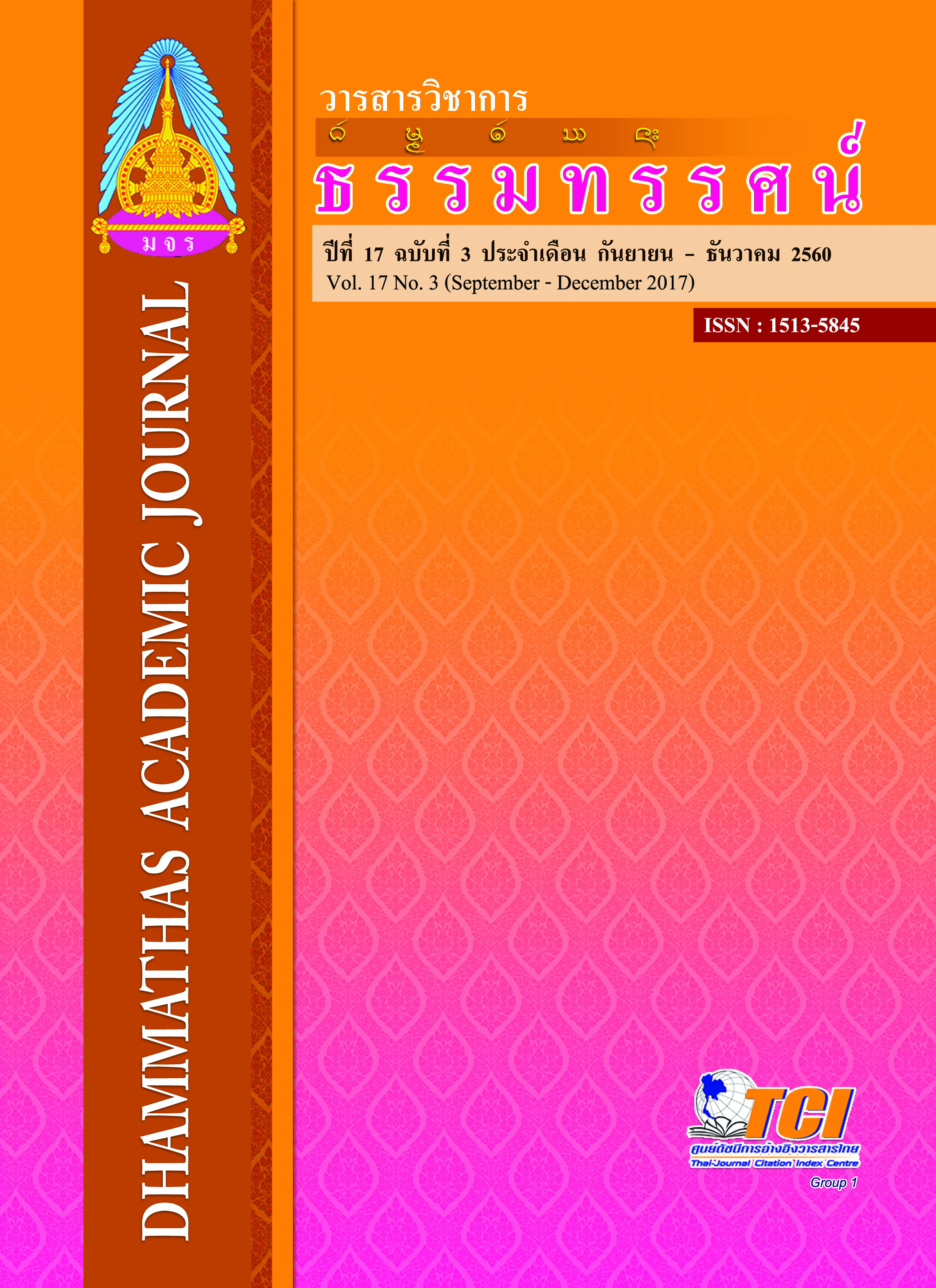The Development of Tourist and Tourism Management Potential of Buddhist with Public Consciousness in Chiang Mai
Main Article Content
Abstract
The purpose of this qualitative research were to 1) study the context of the Buddhist tourism’s temple, in Chiang Mai 2) develop the tourist and tourism management potential of Buddhist’s for public conciousess in Chiang Mai 3) get the quideliness management of Buddhist’s potential for public consciousness in Chiang Mai It received from an intentional section by 4 temples in Chiang Mai, Wat Sund Donk, Wat U-Mong, Wat Jet Yod, Wat Srisoda). Each temple consisted of 1 abbot or abbot’s deputy, 4 monks or norvices, 4 temple’s warden or temple’s comitties, 4 Thai tourists, 4 foreign tourists, 24 villegers, member of guide Association, 1 member province chamber of commerce and 1 member of the tourism and sport, Thailand. (Total 47 persons) The instrument consisted of the Formal interviewing, Focus group, group’s brainstorming, an observation and depth interviewing. The data analysis by content analysis.
The research results found that 1) the context of the Buddhist tourism in Chiang Mai every temples had the structure of administration under the role of abbot with the committees, there were 2 systems of Buddhist potential management Formal system were assigned by the committees or abbot, non formal system used by integration. Explained by guide or local people. The places of worship and resources every temples had differences history which was interesting. The cooperation from the Buddhist people were related with local temple in their community only foreigns tourists more interested the monuments than donated. 2) The development of the tourists and tourism Buddhist potential management for public conciousess in Chiang Mai. There weren’t any plan or activities to develop them. Every temples was decorated the inside temple peace with appropriate clean, safety and facilities. There weren’t temple clusters but each temple used internet/Facebook/Wi-Fi for promotion instead. 3) The best queenliness management of Buddhists potential for public consciousness in Chiang Mai ought planning and following the activities such as seminar and used public relation with continuously. 4) The guidelines management of Buddhist’s potential for public consciousness in Chiang Mai ought to have strategic plan. The seminar both people in and out of the temple (tourists) in order to have awareness excursions are organized. With appreciation nurtured. Hning apromotion in many languages guide to introduce activities correctly.
